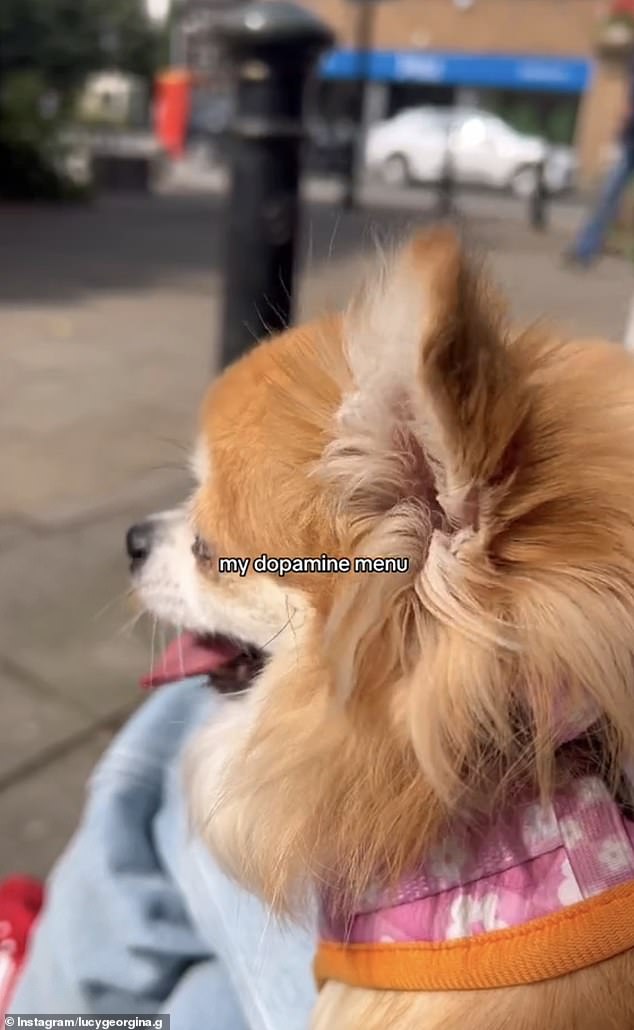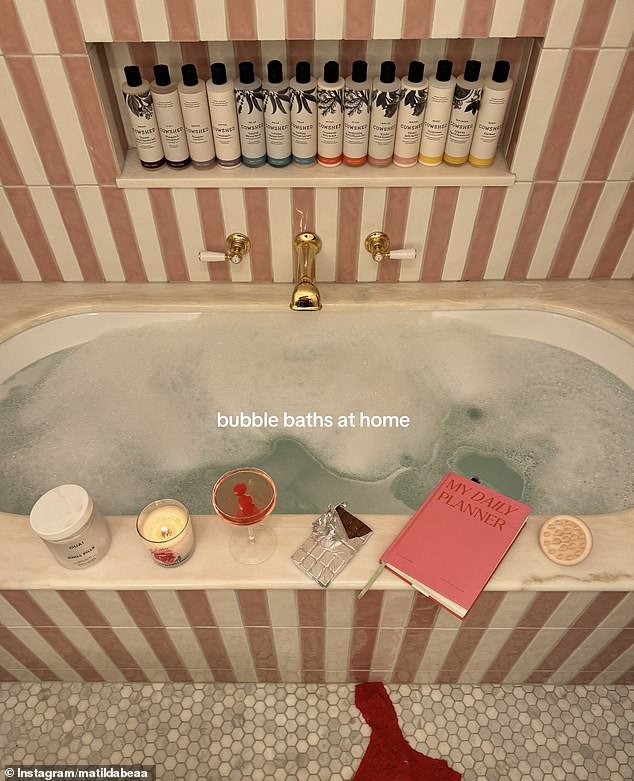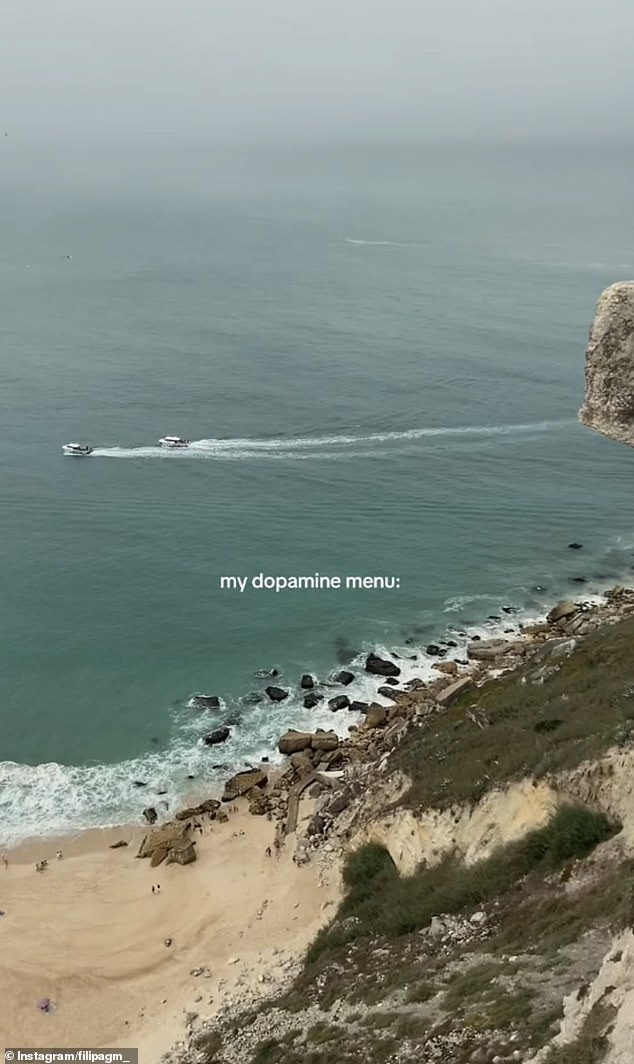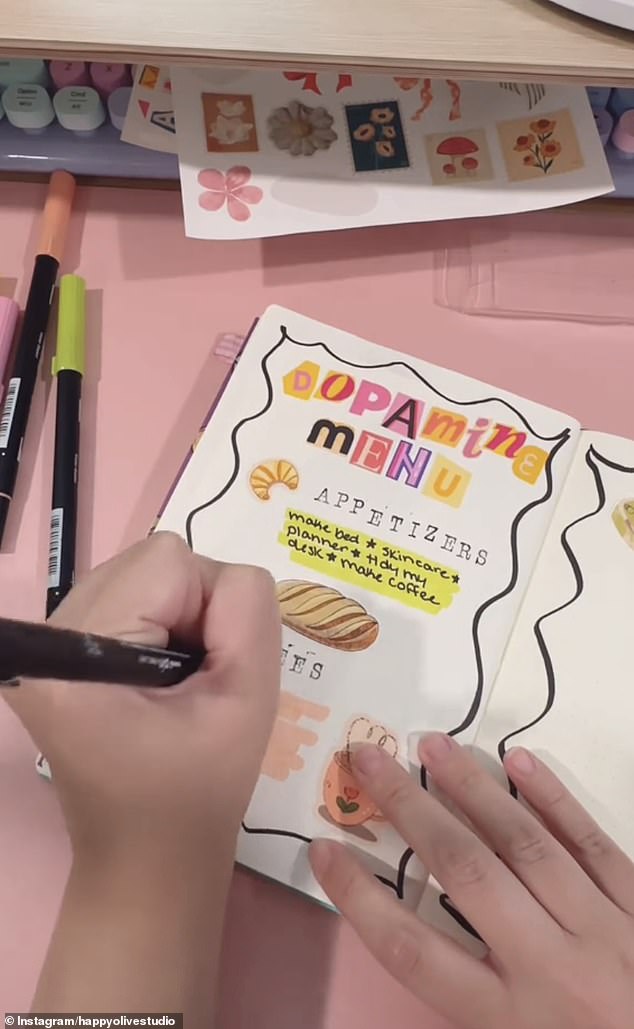We could all use a little push from time to time when life starts to feel a little heavy, but the idea that there is a formula for happiness has long been debated.
However, Gen Z thinks it might have the answer, as a trend is starting to develop on TikTok: so-called “dopamine menus,” which are a list of daily activities or moments that trigger happiness.
The trend has gained popularity on social media as a way to avoid doom scrolling by keeping a list of natural dopamine boosters on hand that don’t involve technology.
TikTok and Instagram creators have been sharing their takes on the trend that rejects technology and celebrates simple pleasures, with clips of flowers, candles, brisk morning walks, freshly baked cakes and colourful knitwear appearing in video montages.
Dopamine menus may appear simply as lists, or they are sometimes divided into groups of starters (quick dopamine hits like natural sunlight or a favorite snack), main dishes (time-consuming activities like baking or journaling), side dishes (ways to enhance boring tasks like chores or revision, such as listening to music or a podcast), and desserts (dopamine hits that should only be enjoyed once in a while, like watching a TV show or checking social media).
@happyolivestudio shared clips from a handmade journal filled with stickers, doodles, and notes about her favorite things.
Creator @lucygeorgina.g shared a snap of her safe dopamine-boosting activities that included latte art and baking, while @happyolivestudio shared clips of a handmade journal filled with stickers, doodles and notes about her favourite things.
Meanwhile, London-based lifestyle influencer Matilda Bea shared a list of her most joyful activities, including “bubble baths at home,” “planning vacations,” “hosting dinner parties,” “a well-stocked fridge,” “weekends with friends,” “open-top cars,” “girls’ nights,” “doing makeup,” and “clean sheets,” among others.
For @filipagm_ it was pretty much the same, with baked goods, coastal scenes, bright flowers and paintings in her roundup.
The soundtrack to many of these TikTok roundups is an audio clip from American podcaster Payton Sartain, who discusses the trend in an episode of her podcast Note To Self, titled ‘Building a Dopamine Menu’.
“Basically, I just discovered the concept of a dopamine menu, which is basically a list of things you can do to feel good throughout the day and not get into the desperation of scrolling through social media,” the voiceover says.
Dopamine is a neurotransmitter produced in the brain and is a vital part of the body’s reward system. Those with low levels of dopamine (for example, people with ADHD) often seek quick fixes through social media, snacking, or shopping, also known as “high stimulation behavior.”
The result of indulging in high-stimulation behavior is that after the initial high, we’re likely to experience a crash, as clinical psychologist Ellen Littman PhD explains: ‘Dopamine-deficient brains experience a surge of motivation after a high-stimulation behavior triggers a dopamine release.
“But as a result of that increase and reward, they return to the initial levels with an immediate drop in motivation.”
The idea of a dopamine menu is to curb those cravings for high-stimulation activities and put an end to the cycle of highs and lows. Natural sunlight, spending time with a loved one or pet, relaxing with a book, meditation, and exercise are all known natural mood boosters.

Creator @lucygeorgina.g shared a snap of her go-to activities for getting a dopamine fix, which include latte art and baking.

London-based lifestyle influencer Matilda Bea shared a list of her most joyful activities, including “bubble baths at home,” “planning holiday parties,” “hosting dinner parties,” and “keeping a well-stocked fridge.”

For @filipagm_ it was much the same, with baked goods, coastal scenes, bright flowers and paint along the way.
“By having a list, we can proactively choose positive, mood-boosting actions rather than resorting to habits we know aren’t helping us be the person we want to be,” Dr Sophie Mort, Headspace mental health expert and clinical psychologist, told FEMAIL.
‘This approach can improve emotional well-being by creating a sense of control and balance, helping to avoid feelings of boredom, anxiety or depression.’
While it may seem like a fun TikTok moment, psychologists back up this trend.
Bella von Nesselrode, a member of the Complementary Medical Association, works alongside neuroscientists and psychologists and has shared that there is a lot of enthusiasm around the concept of a dopamine menu as a way to combat negative dopamine-seeking cycles.
She told us: ‘Psychologists who treat the ADHD community recommend that it’s wise to have a dopamine menu of things you can turn to, to get a more natural and well-earned source of dopamine.’
Dr. Sophie Mort also says it’s a valuable tool for those who can easily fall into procrastination habits.
“Procrastination often arises from the tendency to seek immediate gratification through less productive activities,” he explained.
We can address procrastination by breaking a task into manageable chunks and then rewarding the completion of each chunk with something from our dopamine menu.
‘Or, if we’re having a hard time motivating ourselves to get out of bed and approach the task, we can choose something from the dopamine menu that gives us a boost, so we can then get into the mental state necessary to perform the required task.’
The “dopamine menu” was coined by American YouTuber Jessica McCabe in her 2020 video “How to Give Your Brain the Stimulation It Needs.”
The “dopamine menu” was coined by American YouTuber Jessica McCabe in her 2020 video “How to Give Your Brain the Stimulation It Needs.”
Jessica explained on her channel ‘How To ADHD’ how dopamine menus can be used as a tool for people with attention deficit hyperactivity disorder (ADHD) to find healthier ways to get a dose of dopamine without quick fixes.
Following the success of Jessica’s video, which was viewed nearly two million times, the dopamine menu trend grew in popularity on ADHD forums and subreddit threads like r/adhdwomen.
But while the idea of a dopamine menu may seem simple, Reddit user HarrietGirl points out that it’s important to remember that it can be a struggle at first.
“The important thing to remember is that nothing works at first,” she explained in the r/adhdwomen thread.
‘Your brain is desperate for quick, reliable solutions that it knows. That’s why you have to go back to the menu again and again and train yourself to remember what you like.
She continued: “It won’t work all the time, I often revert to dessert-only days. It’s the nature of the beast. But I can always pick up my menu and train myself to come back to it when I stray.”
Rachel Morgan-Trimmer, founder of neurodiversity company Firebird, explains how a dopamine menu can help those with ADHD in particular, telling FEMAIL: ‘For those of us not lucky enough to have a balanced cocktail of brain chemicals, seeking out dopamine can help us feel normal.
‘The ADHD stereotype is that we’re always seeking dopamine to feel good, so we play extreme sports, take risks, or abuse substances. But in fact, many of us with ADHD seek dopamine to feel normal, since our balance is out of whack in the first place.
‘A dopamine menu can guide us towards those activities that not only give us that much-needed dopamine boost in the first place, but also help nourish us in the long run. Examples might include cooking a nutritious meal, going for a bike ride, or even just immersing ourselves in a good book.’

